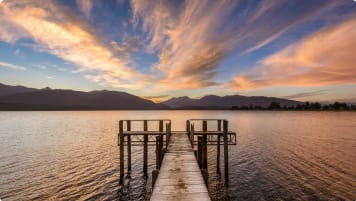Top 10 Natural Curiosities of Australia and New Zealand Top 10
Experiences and stories create intrigue for the senior couple and mature solo traveller when exploring the outback of Australia and the national parks of New Zealand such as Fiordland, Gaunt creek or Kaikoura. Read on to learn more before you join a small group tour with Odyssey Traveller.
30 Nov 21 · 10 mins read

Natural Curiosities of Australia and New Zealand
Australia and New Zealand, isolated geographically from the rest of the world, have developed their own distinctive natural world quite unlike anywhere else on earth. To the rest of the world, some of these natural phenomena are interesting, some a little quirky, and others just downright weird. From frogs with pouches, to carnivorous snails, fruit-shaped rocks, and gigantic meteor craters, read on to discover Australia and New Zealand’s top curious animals and landforms.
This article is intended as background reading for Odyssey Traveller’s collection of tours to Australia and New Zealand. These tours are for both the mature and senior traveller, as part of a couple or as a solo traveller.
1. Assa Wollumbin Pouched Frog (Australia)
The first natural curiosity on our list is the recently discovered Assa wollumbin species of frog, one of only two in Australia to carry its tadpoles on its body. These types of frogs are commonly referred to as pouched or hip pocket frogs, or sometimes the marsupial frog, with the males carrying the tadpoles on their sides until they develop into frogs themselves two to three months later. Of the 4,000 frog species around the world that have male parental care, only four carry the developing tadpoles in this manner.
The tiny frog, measuring 16mm, was discovered in Wollumbin National Park in northern New South Wales. The population is confined to just one mountain with an area of about 2,000 hectares. To protect the tiny and unusual frogs, the NSW government has dedicated this habitat an asset of intergenerational significance.
2. Ora Branda Meteorite Crater (Australia)
Found near the Western Australian mining town of Ora Branda, the duly dubbed Ora Branda Meteorite Crater is one of the largest meteorite craters in the world, with a diameter of 5km. It is believed to have been created by an asteroid at least 100 metres wide, hitting the location around 100 million years ago, back when dinosaurs still walked the earth.
Despite its size, however, the crater was only discovered in September 2020. Unlike other meteorite craters in Australia, this one is not visible from the surface. The landscape here is actually very flat, the crater having filled in over geological time. One when an Australian gold mining company came across some unusual rock cores did they call in a geologist to determine what really lay beneath. Examining the company’s drill core samples, as wells as other rock samples, the geologist immediately noticed shatter cones – tell-tale signs of a meteorite strike. Using electromagnetic surveys, the geologist was then able to map out the crater below the surface in its full.
The Ora Branda Meteorite Crater is just one of many found in Outback Australia. Perhaps the most well-known is the Wolfe Creek Crater, having been featured in the 2005 horror film Wolf Creek. Lying on the edge of the Great Sandy Desert in the Kimberley, this crater is 880m in diameter and almost perfectly circular. The meteorite that created it weighed about 17,000 tonnes, and hit earth less than 120,000 years ago, leaving the creator well-preserved to view (and climb!) today.
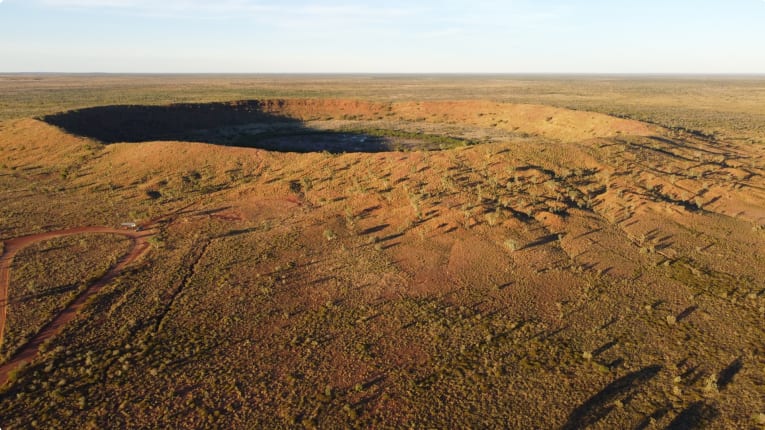
Even younger craters can be found at the Henbury Meteorites Conservation Reserve, located 146km southwest of Alice Springs in the Northern Territory. Around 4,700 years ago, the Henbury meteor, weighing several tones and accelerating to over 40,000 km per hour, left 12 craters here when it disintegrated before impact. Today each of the 12 craters are unique; some are barely noticeable, while the largest is 180m wide and 15m deep. Scattered fragments of the meteor can be seen at the Museum of Central Australia
3. Gould’s Mouse (Australia)
The Gould’s Mouse, thought to have gone extinct 125 years ago, was “resurrected” by a team of researchers at the Australian National university in Canberra in June 2021. When comparing DNA samples from specimens of eight extinct Australian rodent species with that of 42 of their living relatives around Australia, they made an unexpected discovery. The analysis revealed that the Gould’s mouse was indistinguishable from the Shark Bay mouse living on several small islands off the coast of Western Australia. The little mice with shaggy fur and large black eyes were one in the same.
So, the Gould’s mouse never actually completely died out. This was a surprising discovery as Gould’s mouse were originally found in New South Wales and Victoria before they were thought to have gone extinct – that’s over 4,000 km away from Shark Bay. The researchers believe the mice made their way over to the islands when they were still connected thousands of years ago. As the sea level slowly rose, a little pocket of the population was trapped there, thereby ensuring species remained extant.
4. Devil’s Bath (New Zealand)
Located inside the Wai-O-Tapu Thermal Wonderland, just south of Rotorua in New Zealand’s North Island is the neon yellow-green sulphur pond known as Devil’s Bath. The bath sits in a crater likely formed from a massive eruption underground. It gets its colour from deposits of sulphur that mix with the great variety of minerals present in the soil, rising to the surface and floating on top. Depending on the inclination of the sun’s rays and the amount of minerals present in the water, the colour varies from an intense green to a bright shade of yellow. The unnatural sight – and intense stench – can only be described as hellish.
Devil’s Bath is just one of many bubbling geothermal sights within the 18 square km Wai-O-Tapu Thermal Wonderland. With sprouting geysers, colourful lakes, steaming mud pools, and moon-looking volcanic craters, there’s no shortage of wondrous attractions.

5. Powelliphanta Carnivorous Snail (New Zealand)
The flesh-eating powelluphanta genus includes the largest carnivorous snails in the world. The biggest species, found in Kahurangi National Park near Nelson in the northwest of the South Island, measures about 9cm across and weighs 90g. They are also among some of the oldest carnivorous land snails on Earth, having slimed their way across the moist, high-altitude environments of New Zealand for some 200 million years.
Their favourite dish? Delicious earthworms, which they slurp up eagerly like spaghetti. When worms are off the menu, they opt for slugs, smaller-sized snails, and other soft-body invertebrates. Luckily, humans face no threat, our flesh not to the snail’s taste.
Despite their brutish nature though, the snails are actually quite beautiful. Vibrant reds, browns, yellows, and black forge together on their shells in a variety of patterns that glisten in the moonlight (night being their favourite time to hunt). During the daytime, they rest buried in leaf mould or under logs. And when they’re not eating or sleeping, they’re mating – as hermaphrodites, they can have both male and female reproduction. Living up to 20 years, life is good for the powelluphanta snail.

6. Pancake Rocks (New Zealand)
Located at Dolomite Point near Punakaiki on New Zealand’s South Island, a series of limestone rocks lie stacked on top of each other as flat as pancakes. The foundations of the Pancake Rocks, as they’re called, were formed 30 million years ago from the fragments of dead marine creatures and plants on the seabed solidified into layers of limestone by extreme water pressure. Gradually, a series of earthquakes raised the solidified layers above the sea surface, where acid rain, harsh winds, waves, and salt spray sculpted the limestone into its photogenic pancake-like appearance.
These days, several of the rocks here become gushing vertical blowholes when the tide is high and there is a south-westerly swell. At this time, the sea becomes rough enough to burst through and create a huge wall of spray. The blowholes can be easily reached via a 15-minute walk – just remember to stand back if you don’t feel like getting drenched.

7. Platypus (Australia)
When European naturalists and scientists first encountered the platypus in the late 18th century, they were deeply confounded, convinced it couldn’t be real. With a hodgepodge of features, including a body resembling an otter, the tail of a beaver, and a duck’s bill and webbed feet, many thought these extraordinary animals were a hoax. As Australians now know though, the platypus is simply a strange and incredible animal: its bill can sense its prey underwater through echolocation much like a dolphin, its soft fur provides insulation, and the males even have a venomous spur for defence on their hind limbs.
Even more unusual, it is one of only two mammals, along with the echidna, that lay eggs. A mother typically produces one or two eggs at a time, keeping them warm between her body and tail until they hatch about ten days later. As baby platypuses are the size of lima beans and totally helpless, the mother then nurses them for three to four months until they can swim on their own.
The platypus can be found across the eastern extent of Australia, inhabiting ponds, creeks, and other waterways, where it feeds on worms, insect larvae, and freshwater shellfish. It does so by scooping up the food in its bill along with bits of gravel and mud from the bottom. As the platypus does not have teeth, the bits of gravel help it chew its meal.
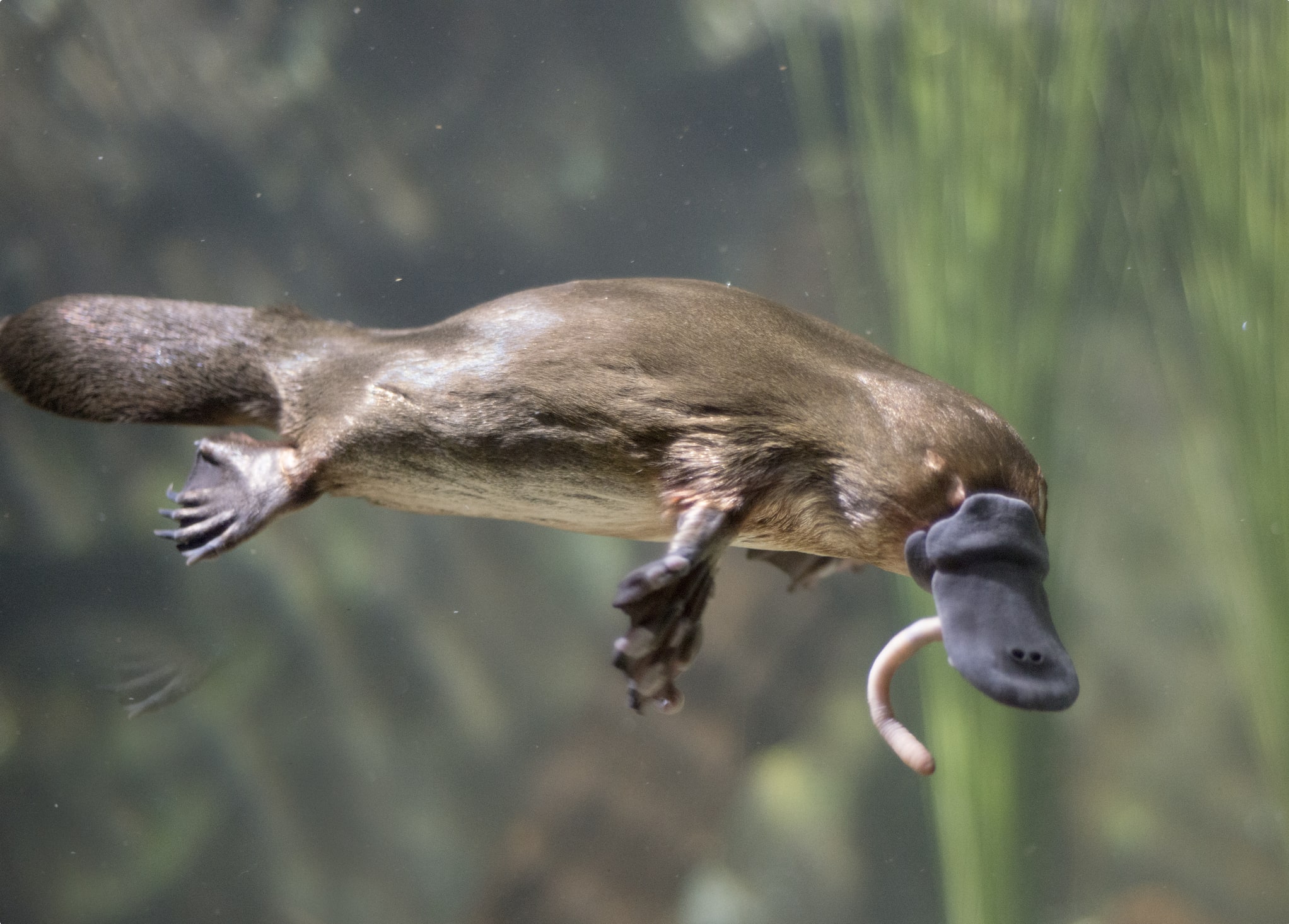
8. Mungo National Park (Australia)
The Willandra Lakes region, home to Mungo National Park, provides a geological window into the deep past of ancient Australia. Buried here in thick layers of sand and clay are the tell-tale signs of how the climate, waters and landforms have changed over the last 100,000 years.
The region consists of 19 dry relict lakes that were once filled with glacial waters flowing east with meltwater from the Great Diving Range. These lakes were full from around 150,000 years ago to around 50, 000 years ago, when the end of the Ice Age meant that glacial ice diminished, and water no longer flowed from the highlands.
The lake floors and dune systems that surrounded them remain distinct today. Each lake has crescent-moon shaped dunes known as lunettes on their eastern sides, formed by the prevailing westerly wind. Most iconic is Lake Mungo’s striking Walls of China, part of a 26-kilometre-long lunette. The particular forms of the Walls of China were formed thanks to erosion in the 19th and early 20th centuries, as settlers allowed up to 50, 000 sheep and even more rabbits to destroy vegetation on the dunes, causing them to erode more quickly.
Mungo National Park is also the location of two of the most important archaeological discoveries ever found in Australia: the 40,000-year-old buried remains of a man and woman. Known as Mungo Lady and Mungo Man, they are among the oldest ancestral remains of modern humans, homo erectus in the world, and are possibly Australia‘s oldest human remains to date.
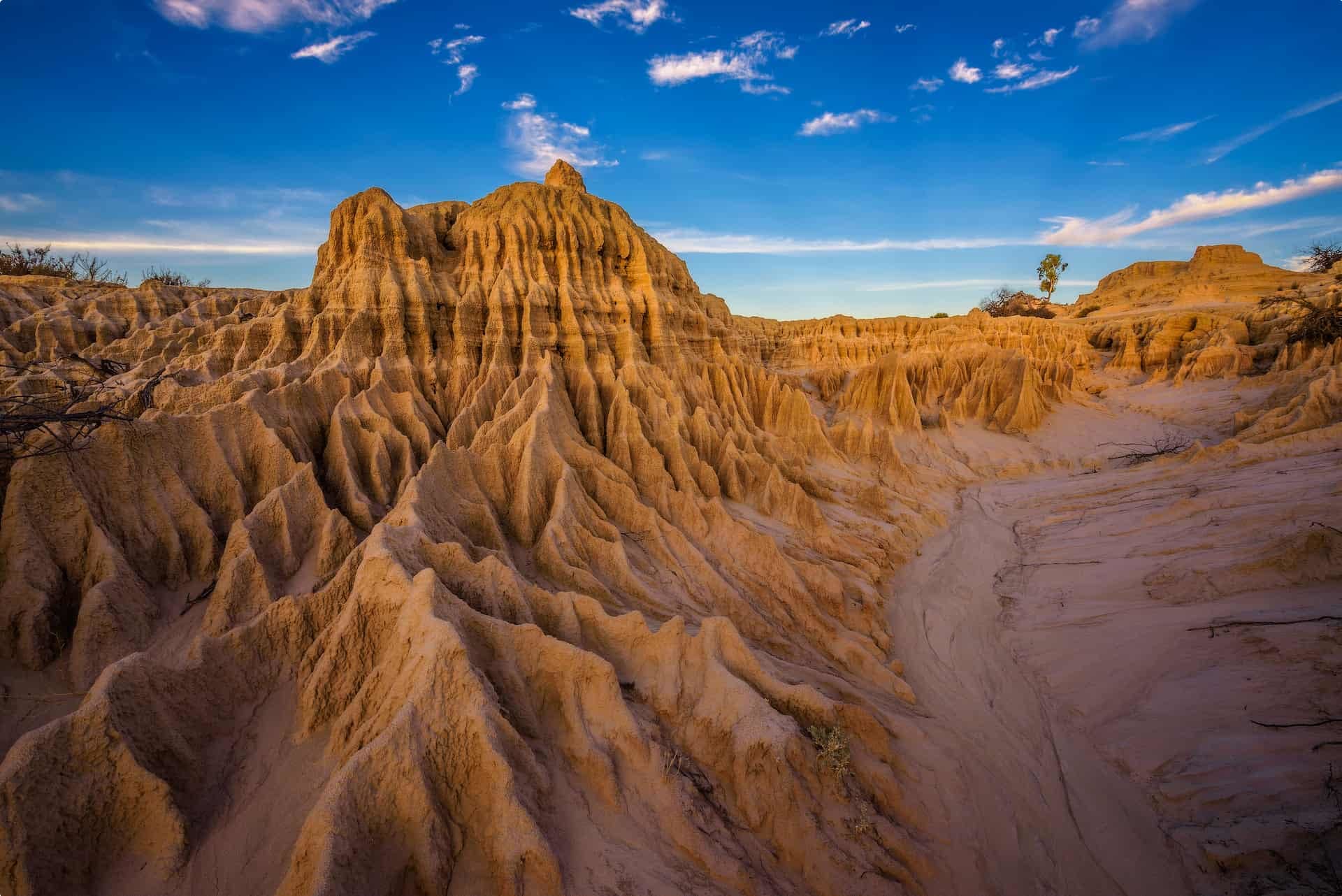
9. Tuatara (New Zealand)
New Zealand’s native Tuatara resembles a lizard but is of an ancestry far predating every other kind of known reptile on earth. In fact, the Tuatara is the only surviving member of its class, with other relatives slowly dying off before becoming wholly extinct around 60 million years ago. This genetic abnormality has piqued the curiosity of many researchers and evolutionary biologists, seeing the Tuatara as a ‘living fossil’, with many characteristics from species that were alive during the dinosaur era.
Also curious is the reptile’s third eye, known as a parietal eye, on the top of its head. This organ has a retina, lens, and nerve endings, yet it is covered with scales and pigments and so it isn’t used for seeing in the regular sense. Instead, sensitive to light, it helps the tuatara judge the time of day or season.
Today you can find the Tuatara on a number of islands off New Zealand’s coast, or at a wildlife park, with habitation on the mainland coming to an end following the introduction of competitor species.

10. Split Apple Rock (New Zealand)
Split Apple rock sits 50m out from the shores of Tasman Bay, on the north end of New Zealand’s South Island, appearing as a giant stone fruit sliced neatly right down its middle. The boulder, estimated to be around 120 million years old, is made entirely of granite and, quite unusually, is divided into two perfect halves.
The cause of this phenomena is highly contested. Scientists believe that water seeped into a crevice in the rock and then froze during in ace age over 120 million years ago, thus expanding and splitting the stone. On the other hand, according to traditional Maori legend, the boulder was split by two feuding gods who each wanted to possess it. Unable to decide who it belonged to, they decided to use their strength to break it in half so it could be shared. As such, the Māori name for the rock is Tokangawhā, or “burst open rock”.

Tour of Australia and New Zealand
Odyssey Traveller now offers a wide array of tours down under to Australia and New Zealand.
Our guided tours in Australia are not your typical Australia vacation – Great Barrier Reef, Sydney Harbour and iconic Uluru (Ayers Rock) – but a chance to get off the beaten path. On one Australia tour we explore stunning coastline on a trip around the Eyre Peninsula – better than Bondi Beach, Byron Bay or the Gold Coast, and without any of the crowds of the East Coast! Another small group tour sees us explore South Australia’s Adelaide and surrounds, making a day tour to beautiful Kangaroo Island. Or why not choose our tour of the Kimberley, on the remote north west coast, for your next Australia trip? With a collection of some 70 schedule small group tours in total, your spoilt for choice.
Our guided New Zealand tours, meanwhile, explore the stunning scenery, quaint towns, and world-class food and wine on both the North and South Islands. Your planned itinerary may include popular destinations such as the Bay of Islands, Auckland, Waiheke island, Waitomo caves, Rotorua, Wellington, Christchurch, Queenstown, fox glacier, and a view of the highest peak Aoraki Mt Cook. Our tours also often head on a day trip to spots popular amongst locals, such as Coromandel peninsula, Hawke’s Bay, the Wairarapa, or one of the many national parks.
Odyssey Traveller has been serving global travellers since 1983 with educational tours of the history, culture, and architecture of our destinations designed for mature and senior travellers. We specialise in offering small group tours partnering with a local tour guide at each destination to provide a relaxed and comfortable pace and atmosphere that sets us apart from larger tour groups. Tours consist of small groups of between 6 and 12 people and are cost inclusive of all entrances, tipping and majority of meals. For more information, click here, and head to this page to make a booking.
Articles about Australia and New Zealand published by Odyssey Traveller:
- Iconic Animals of the Australian Outback
- Uncovering the Ancient History of Aboriginal Australia
- Ancient Aboriginal Trade Routes of Australia
- Why did the British settle Australia?
- Australian Megafauna
- Questions About New Zealand
- The Maori, New Zealand
- New Zealand Wine
- New Zealand Wildlife
- The Arrival of Europeans in New Zealand
For all the articles Odyssey Traveller has published for mature aged and senior travellers, click through on this link.
External articles to assist you on your visit to Australia and New Zealand:
Related Tours

14 days
May, Sep, Mar, OctEscorted small group tour of Australia's megafauna
Visiting New South Wales
Discover the unique Megafauna of Australia travelling in a small group tour. A journey of learning around New South Wales. Visit key sites including the Brewarrina fish traps. For senior and mature couples or solo travellers with an interest in aboriginal history.
From A$11,495 AUD
View Tour
days
Jun, Jul, Sep, Feb, Mar +1Darwin and Kakadu small group tour
Visiting Northern Territory
Explore and learn as part of a small group tour for seniors on this package tour to Darwin and Kakadu National park, a UNESCO world heritage site. This program also visits Arnhem land. Our focus is on ecology, landscapes and history on this 14 day program in the far north of the Northern Territory.
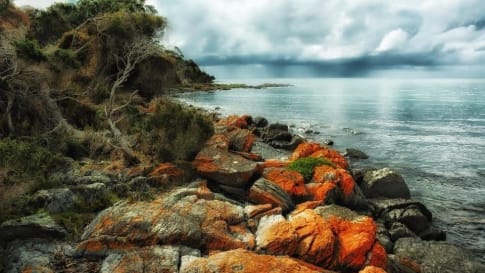
19 days
Mar, Nov, FebDiscovering Tasmania’s Wildlife
Visiting Tasmania
Small group tour of up to 15 mature and seniors travellers visiting and learning about Tasmania's wildlife and history. Visit Maria Island, Freycinet peninsula, Cradle Mountain, Strahan, Lake St Clair and Bruny Island over 16 days.
From A$11,450 AUD
View Tour
14 days
Mar, May, Jun, Jul, Aug +3Escorted small group tour of Western New South Wales
Visiting New South Wales
Discover the the Brewarrina fish traps, Aboriginal art at Mt Grenfell and visit the opal fields of White Cliffs. This small group also visits the World Heritage Site of Mungo man and lady stopping in Mungo National Park and other significant locations such as Broken Hill.
From A$9,250 AUD
View Tour
days
Mar, May, Aug, Sep, Oct +2Small group tour of World Heritage sites and more in the Southern States of Australia
Visiting New South Wales, South Australia
Discover the World Heritage Sites of the southern states of Australia travelling in a small group tour. A journey of learning around the southern edges of the Murray Darling basin and up to the upper southern part of this complex river basin north of Mildura. We start and end in Adelaide, stopping in Broken Hill, Mungo National Park and other significant locations.

15 days
Sep, Dec, Jan, Feb, Mar +2Eyre & Yorke Peninsulas, and the Gawler Ranges
Visiting South Australia
Small group tour South Australia. Yorke, Eyre, and Gawler Ranges, discover the local history.
From A$10,350 AUD
View Tour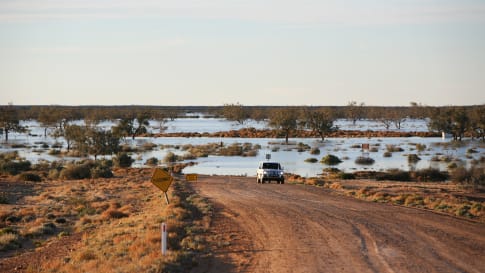
65 days
MarLong tour of Australia for a small group
Visiting New South Wales, Northern Territory
Small group tour for senior couples and solo travellers touring Australia. Travelling through the outback and visiting many of the famous sights as well as off the beaten track locations. Learn about the history of the people who explored the deserts, from indigenous communities to Europeans, as well as Burke and Wills, visit White Cliffs, Marree and far north Kakadu and the Kimberley.
From A$48,995 AUD
View Tour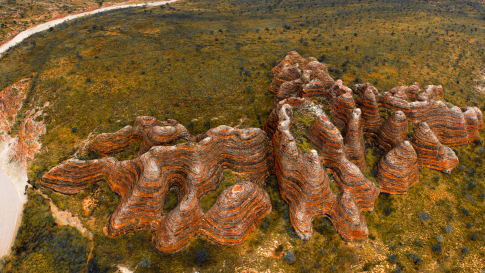
19 days
Sep, Apr, May, Jun, Jul +2Kimberley, Purnululu, Tiwi Islands and Arnhem Land
Visiting Northern Territory, Western Australia
Small group tour touring most of the Australian territory, travelling through the outback and visiting many of the famous sights as well as off the beaten track locations, giving you the opportunity the explore and meet our people in the most remote locations and far north Kakadu and the Kimberley.
From A$14,995 AUD
View Tour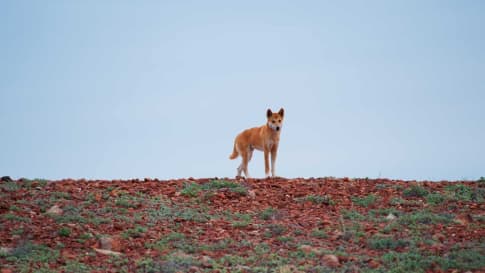
days
Apr, May, Jul, Aug, Oct +2Small group tour of Australia's Flinders ranges
Visiting South Australia
Escorted small group tour of the Flinders range in South Australia from Adelaide. Learn about Coober Pedy, Wilpena pound and water system of Lake Eyre as we explore and learn also about the history of the people who explored the Flinders.

13 days
May, Jun, Jul, Aug, SepSmall group tour of Australia's Kimberley
Visiting Western Australia
Escorted small group tour of the Kimberley. We explore and visit The Bungles, Bell Gorge, Mitchell plateau & Halls Creek in the dry season. Amazing landscapes intertwined with Aboriginal communities resident more than 45,000 years.
From A$15,390 AUD
View Tour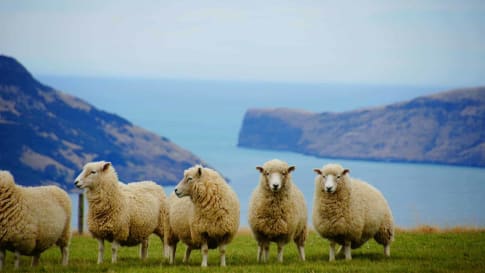
14 days
Aug, Sep, Oct, Nov, Feb +1Small group tour of New Zealand's North Island
Visiting
Escorted 13 day small group tour of the East coast of New Zealand’s North island. Off the beaten track, for like minded people curious about history, culture, wine and landscapes. Your tour director and local guides share their knowledge with you the traveller on this New Zealand tour for senior travellers.
From A$11,495 AUD
View Tour
17 days
Feb, Mar, OctSmall group tour of New Zealand's South Island
Visiting
Escorted 17 day small group tour of the West and East coast of New Zealand’s South island. Off the beaten track, for like minded people curious about history, culture, wine and landscapes. Your tour director and local guides share their knowledge with you the traveller on this New Zealand tour for senior travellers.
From A$13,365 AUD
View Tour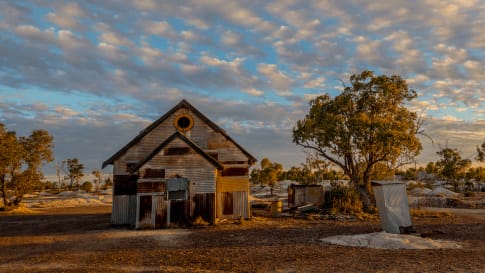
days
Mar, Apr, May, Jul, Aug +2Small group tour of outback Queensland
Visiting New South Wales, Queensland
To Dubbo and back, this small group tour takes you to learn about the Brewarrina fish traps, we travel high up into North Queensland to see the Dinosaurs of Winton and incredible Aboriginal rock art at Cathedral gorge and learn about opal mining and the history of Lightning ridge.
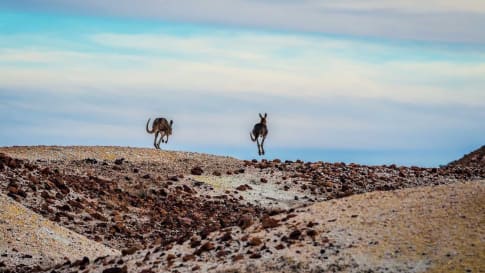
13 days
Mar, OctSmall group tour; Broken Hill and back
Visiting New South Wales, Queensland
Small group tour of New South Wales, Queensland & South Australia deserts, from Broken Hill. Learn about the history of the people who explored the deserts, from indigenous communities to Europeans, as well as Burke and Wills, visit White Cliffs, Birdsville, Maree.
From A$11,550 AUD
View Tour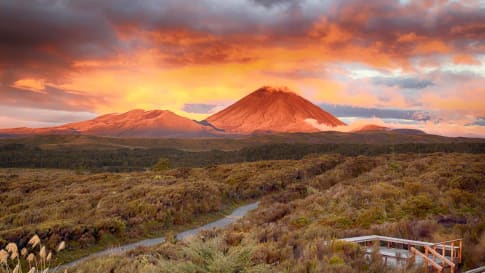
14 days
Mar, Sep, NovSmall group walking tour of New Zealand
Visiting
Escorted 14 day small group walking tour of New Zealand. Off the beaten track, for hiking fit like minded people curious about history, culture wine and landscapes.
From A$13,995 AUD
View Tour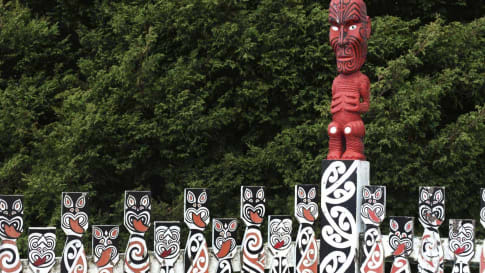
17 days
Oct, Feb, Apr, Sep, MarNew Zealand: An Odyssey Down Under
Visiting
A guided small group tour of both the North island and the South island. Your travel itinerary includes Auckland, Rotorua, Milford Sound, Queenstown and Christchurch. Maori culture also forms part of the journey to provide a memorable New Zealand tour experience.
From A$12,595 AUD
View TourRelated Articles
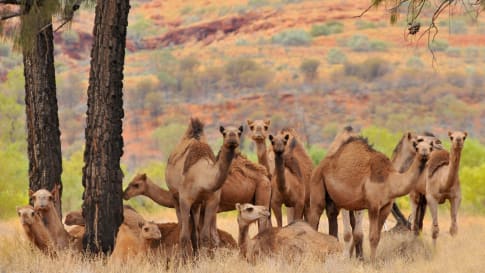
Camels of the Australian Outback
Camels of the Australian Outback Here’s a trivia question : where are the world’s only wild single-hump (dromedary camel) camels found? If you guessed Arabia or the Sahara, you’d be wrong. In fact, the answer…

Highlights of Australia: The yellow-footed rock-wallaby
Another of Australia's unique animals. On many of the small group package tours for mature and senior travelers in the Southern states this Wallaby is encountered. The Flinders range, Broken Hill, Eyre & York peninsula as well as the World heritages sites tours include this reclusive wallaby as part of the itinerary.
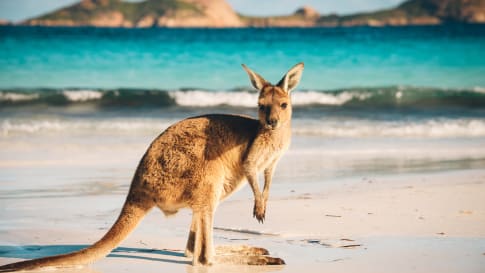
Iconic Animals of the Australian Outback
Explore the wildlife and natural heritage of Australia, with its iconic marsupials, birds, reptiles, and surreal monotremes in the Outback. Odyssey offers small group tours for mature and senior travellers, couples, and solo travelers to Australia.
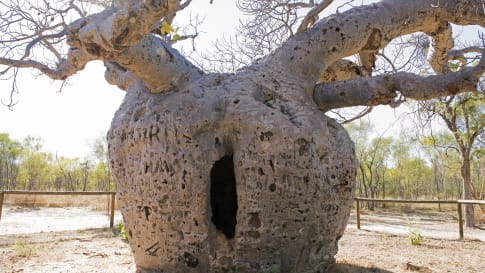
Kimberley Boab Tree
Boab trees are a wonder. Article for mature and senior travellers about this distinctive tree in Western Australia. Join a small group tour for couples and solo travellers exploring the Kimberley.

Alpine Fault at Gaunt Creek, New Zealand
Article for mature and senior travellers visiting New Zealand and in particular the South island. Techtonic activity is always close and this article shares some information with the reader joining a small group tour as a couple or solo traveller.
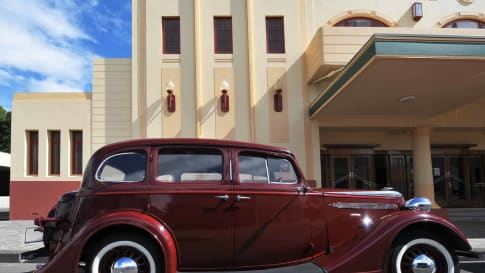
Napier
Napier, is unique in the world of Art Deco. Rebuilt after the 1930's earthquake, this east coast city is almost all art deco in style. Join an escorted small group tour that visits and explores Napier for mature and senior travellers, couples of solo traveller to explore and learn more.

New Zealand Wildlife
Explore the wildlife and natural heritage of New Zealand, with its iconic birdlife, marine mammals, and adorable penguins. Odyssey offers small group tours for mature and senior travellers, couples, and solo travelers to New Zealand.

Rotorua, New Zealand
The geothermal area of Rotorua is explored as part of an escorted small group tour for seniors and mature travellers touring New Zealand's North and South Island. Tour includes; Auckland, Wellington, Te Anau & Queenstown.



